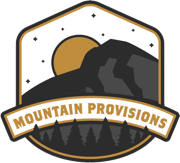Winter steelhead fishing is winding down and that means backpacking, hiking, rafting, kayaking, and trout fishing seasons are about to kick off. Time to get your gear out of storage and give it a once-over.
When was the last time you washed your sleeping bag? How was it stored? Same for your puffy…
- Storing them compressed will shorten their lifespan, as natural and synthetic fibers can’t rebound from compression forever.
- Body oils and dirt decrease loft (which is what keeps you warm). Washing with an appropriate down or synthetic soap can help revive loft as well as maintain tent mates. Given enough time out there we all stink, but best not to start the trip that way.
Does your tent or pack have any new critter holes? Does it smell of mildew?
- Wash it in the bathtub with an appropriate tech wash for synthetic fabrics.
- Repair holes with Tenacious Tape and seal the edges with Seam Grip.
Do all your pack and tent zippers still work?
- Sticky… try a lubricant like Zip Tech from Gear Aid.
- Separating… lightly crimp the zipper front to back across the nose with a pliers.
- Need to be repaired? Send the item or items back to the manufacturer before everyone else figures out they need to do the same.
Did you dry out your filter before storing it for the winter? Did it freeze?
- You filtered out all the nasty stuff, but if you didn’t open it and let it dry when you got back you’ve been storing a petri dish.
- Run a dilute solution of bleach (2-5 drops per liter) through it, then flush with standard tap water.
- Ceramic and microfiber tube filters may be compromised by freezing. Do a pressure test on them before relying on their filtration effectiveness.
Do you use a liquid fuel stove or canister?
- Liquid fuel stoves could use a good Spring cleaning. When you pull it apart to clean it… do so over a tray to keep track of loose parts. Since you planned well and dismantled it before you used it for the first time (with instructions in hand), you should know where every part goes.
- Is your fuel more than one year old? If so, it’s probably gone bad.
- Canister stoves require almost no maintenance. You’re probably good to go on this item.
When was the last time you cleaned your hydration bladder?
- Storing it in the freezer means you won’t have to clean it as often.
- Lemon juice and baking soda work great when you need to clean it (instructions available at www.platy.com/faq).
Waterproof shoes or no…?
- Non-waterproof breathes better and dries faster.
- Waterproof is probably better if the majority of what you’re going to be hiking is wet.
Layering techniques and fabrics…merino wool vs. synthetic
- Merino is not traditional wool. I used to think I was allergic to wool due to the itch. Hives are a symptom of allergies to wool. Itching is a symptom of traditional wool. I now live in Merino wool year-round.
- Synthetic is great at wicking moisture but doesn’t breathe.
- Merino wool breathes and wicks moisture well, leading to a much more comfortable experience. It also doesn’t hold onto odors, leading to a much better smelling experience. It works well in the winter but equally well in the summer.
The trees are budding, daffodils are already up, and wildflowers won’t be far behind! Spring hasn’t fully sprung, but it’s around the corner. Be sure you’re ready.
